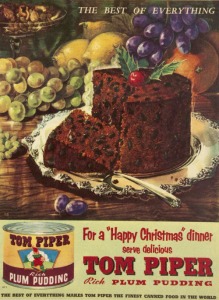 Canning is a method of preserving food in which the food contents are processed and sealed in an airtight container. Canning provides a shelf life typically ranging from one to five years, although under specific circumstances it can be considerably longer.
Canning is a method of preserving food in which the food contents are processed and sealed in an airtight container. Canning provides a shelf life typically ranging from one to five years, although under specific circumstances it can be considerably longer.
A freeze-dried canned product, such as canned dried lentils, could last as long as 30 years in an edible state. In 1974, samples of canned food from the wreck of the Bertrand, a steamboat that sank in the Missouri River in 1865, were tested by the National Food Processors Association. Although appearance, smell and vitamin content had deteriorated, there was no trace of microbial growth and the 109-year-old food was determined to be still safe to eat.

 The main market for canned food at this stage was the British Army and Royal Navy. By 1817 Donkin recorded that he had sold £3,000 worth of canned meat in six months. In 1824 Sir William Edward Parry took canned beef and pea soup with him on his voyage to the Arctic in HMS Fury, during his search for a north-western passage to India.
The main market for canned food at this stage was the British Army and Royal Navy. By 1817 Donkin recorded that he had sold £3,000 worth of canned meat in six months. In 1824 Sir William Edward Parry took canned beef and pea soup with him on his voyage to the Arctic in HMS Fury, during his search for a north-western passage to India.
In 1829, Admiral Sir James Ross also took canned food to the Arctic, as did Sir John Franklin in 1845. Some of his stores were found by the search expedition led by Captain (later Admiral Sir) Leopold McLintock in 1857. One of these cans was opened in 1939, and was found to be edible and nutritious, though it was not analysed for contamination by the lead solder used in its manufacture.
 Throughout the mid-19th century, canned food became a status symbol amongst middle-class households in Europe, being something of a frivolous novelty. Unfortunately, early methods of manufacture employed poisonous lead solder for sealing the cans, which may have worsened the disastrous outcome of the 1845 Franklin expedition to chart and navigate the Northwest Passage.
Throughout the mid-19th century, canned food became a status symbol amongst middle-class households in Europe, being something of a frivolous novelty. Unfortunately, early methods of manufacture employed poisonous lead solder for sealing the cans, which may have worsened the disastrous outcome of the 1845 Franklin expedition to chart and navigate the Northwest Passage.
Increasing mechanisation of the canning process, coupled with a huge increase in urban populations across Europe, resulted in a rising demand for canned food. A number of inventions and improvements followed, and by the 1860’s smaller machine-made steel cans were possible, and the time to cook food in sealed cans had been reduced from around six hours to thirty minutes.
 Demand for canned food skyrocketed during World War I, as military commanders sought vast quantities of cheap, high-calorie food to feed their millions of soldiers, which could be transported safely, survive trench conditions, and not spoil in transport.
Demand for canned food skyrocketed during World War I, as military commanders sought vast quantities of cheap, high-calorie food to feed their millions of soldiers, which could be transported safely, survive trench conditions, and not spoil in transport.
Throughout the war, soldiers generally subsisted on low-quality canned foodstuffs, such as the British “Bully Beef” (cheap corned beef), pork and beans, canned sausages and Maconochies Irish Stew, but by 1916 widespread boredom with cheap canned food amongst soldiers resulted in militaries purchasing better-quality food to improve morale, and the complete meals in a can began to appear.
In 1917 the French Army began issuing canned French cuisine, such as coq au vin, Beef Bourguignon and Vichyssoise while the Italian Army experimented with canned ravioli, spaghetti bolognese, Minestrone and Pasta e fagioli.
 Shortages of canned food in the British Army at around the same time led to the government issuing cigarettes and amphetamines to soldiers to suppress their appetites. After the war, companies that had supplied military canned food improved the quality of their goods for civilian sale.
Shortages of canned food in the British Army at around the same time led to the government issuing cigarettes and amphetamines to soldiers to suppress their appetites. After the war, companies that had supplied military canned food improved the quality of their goods for civilian sale.
And the rest, as they say, is history.

